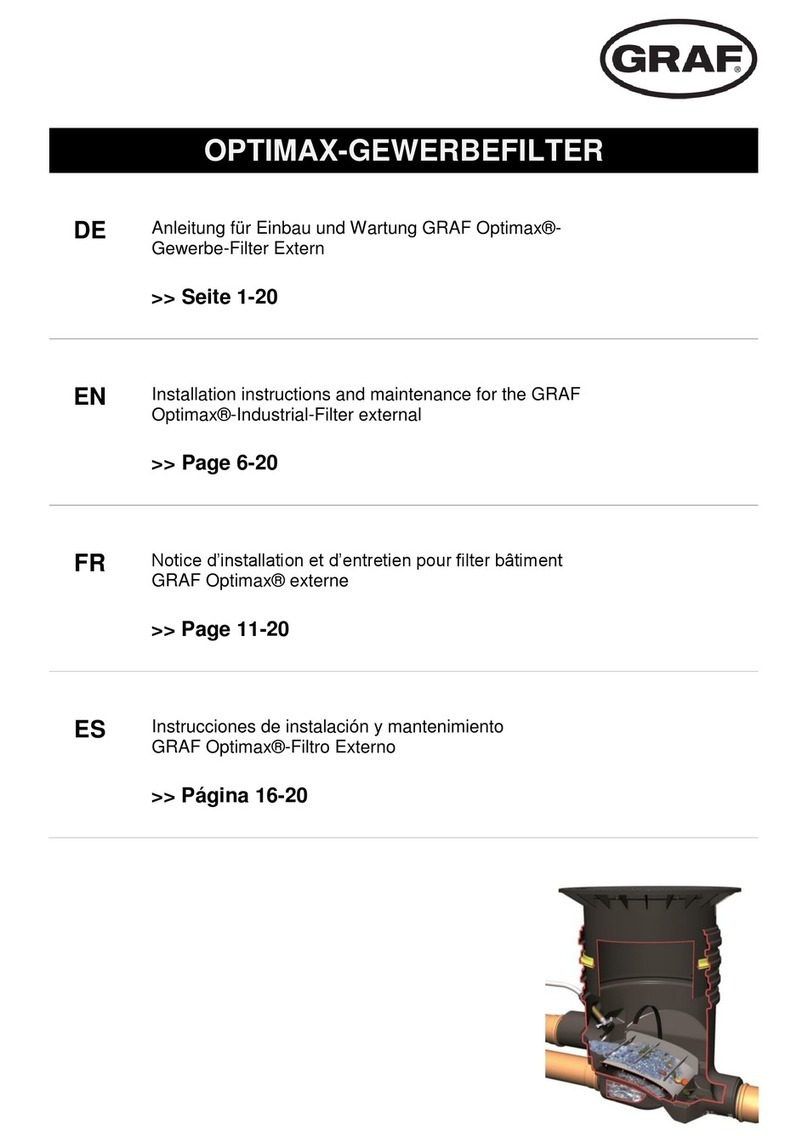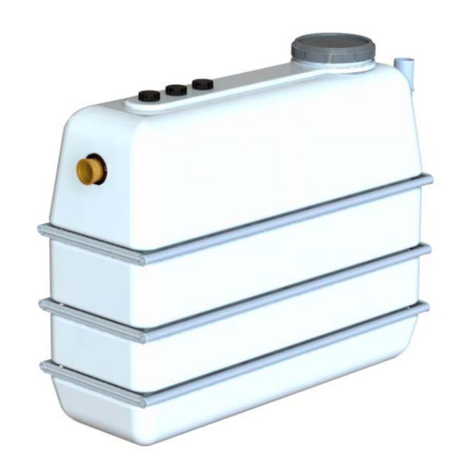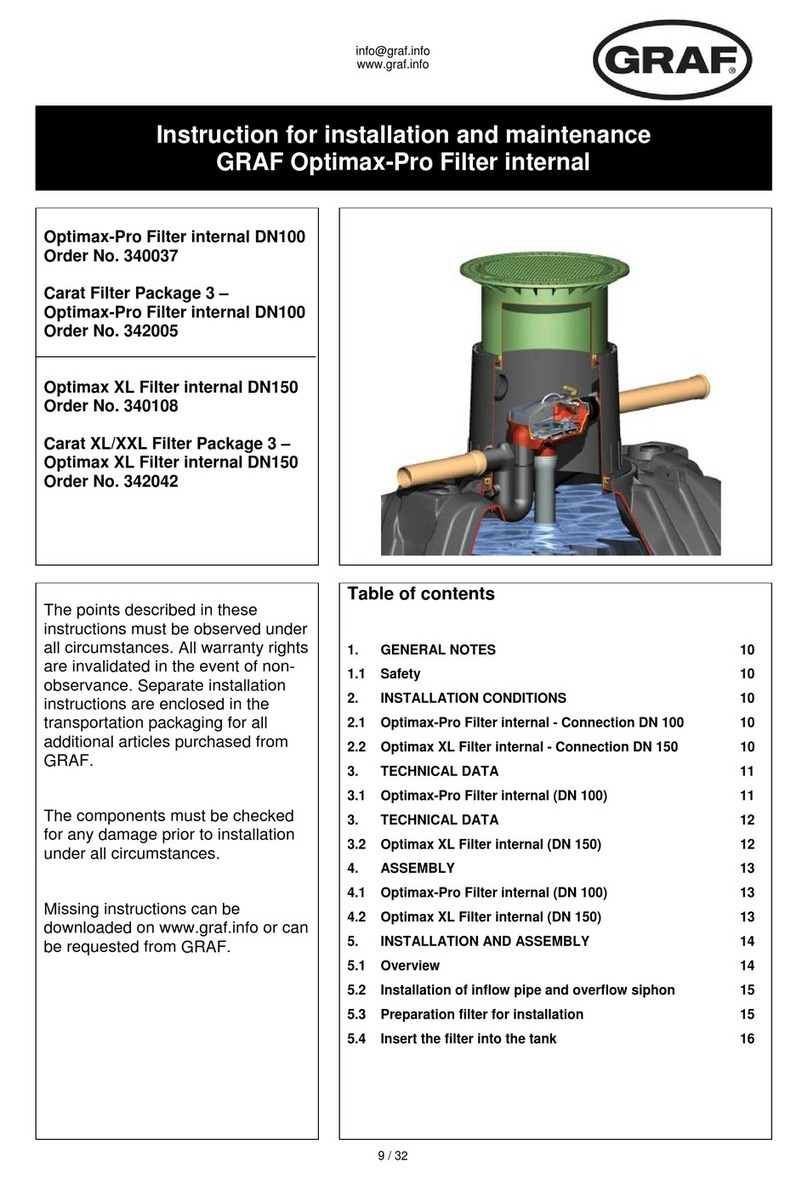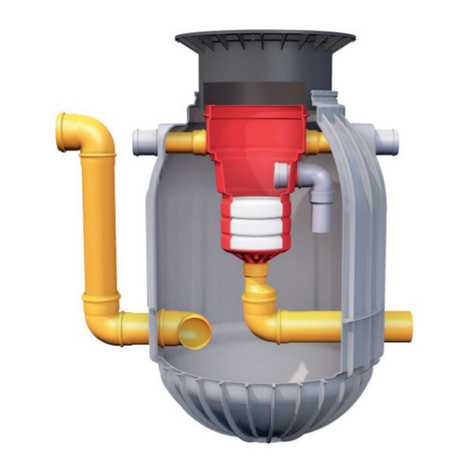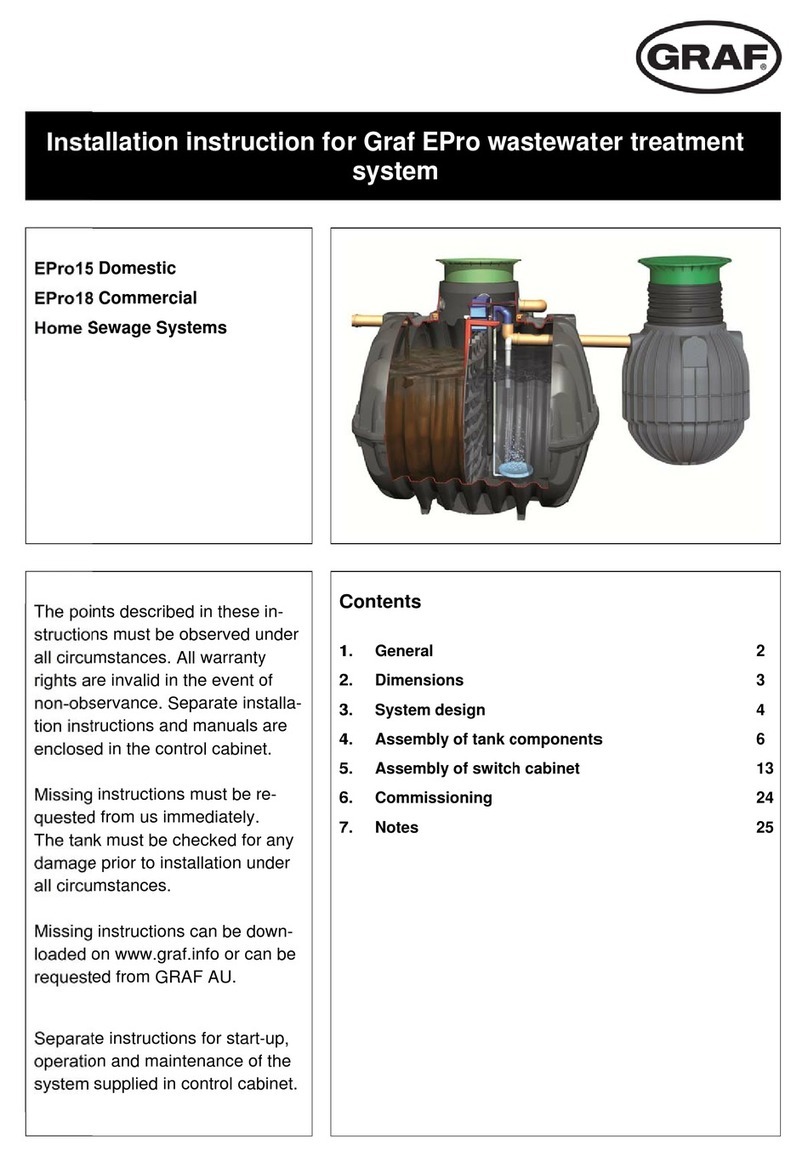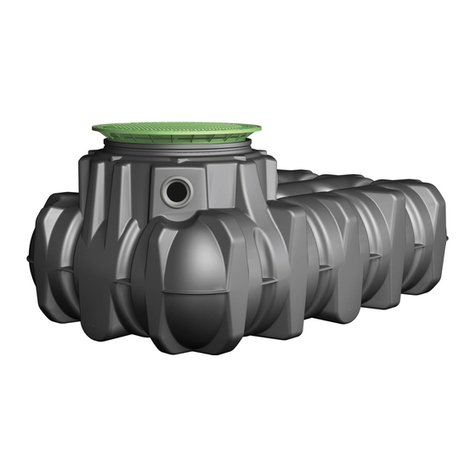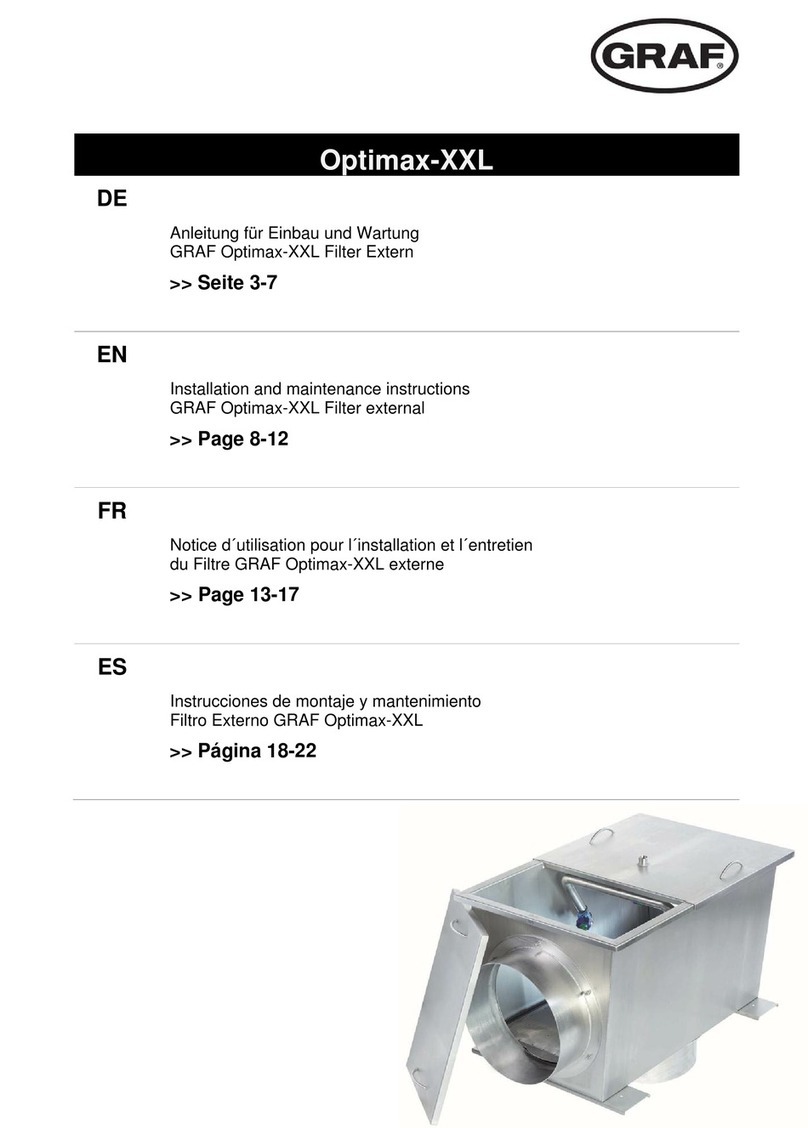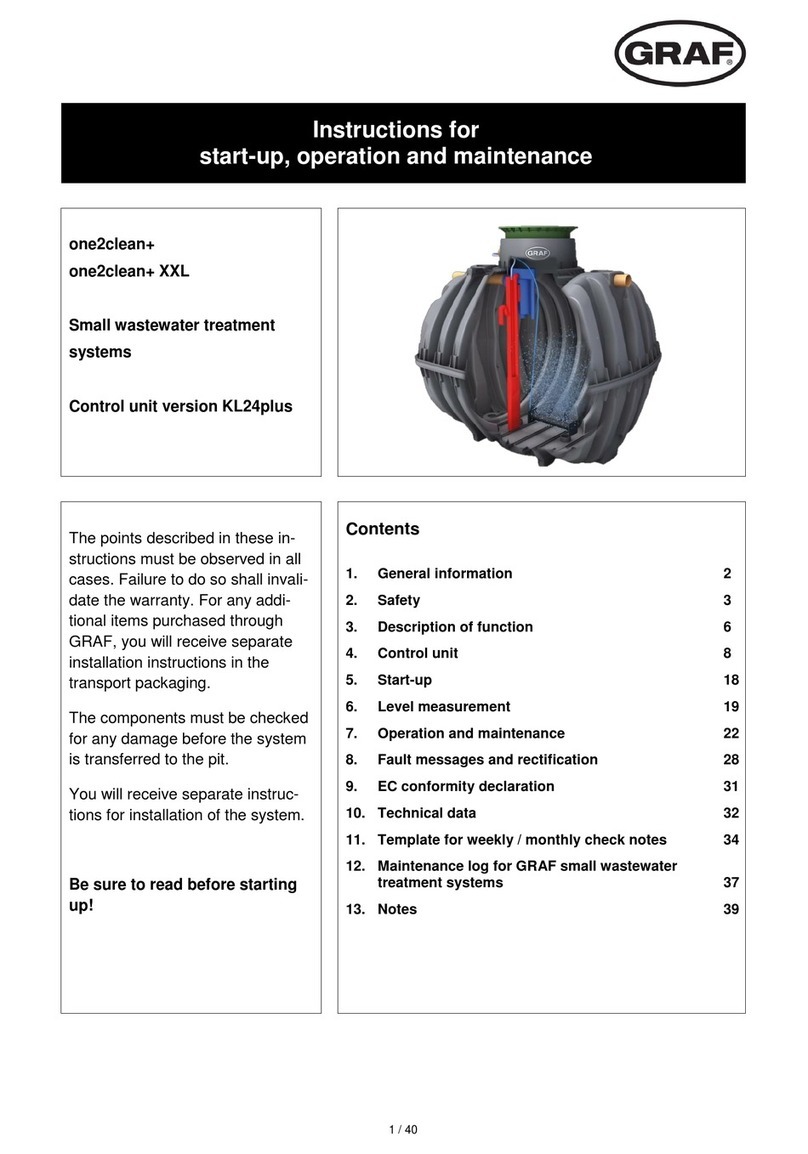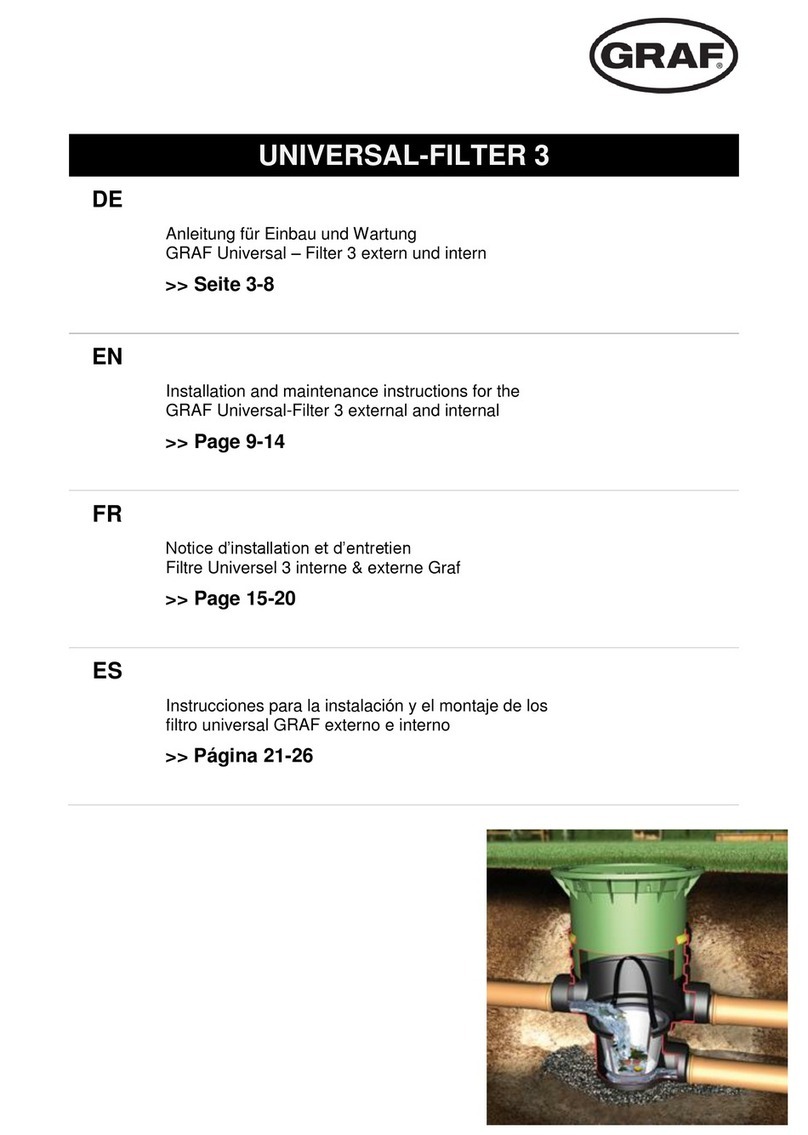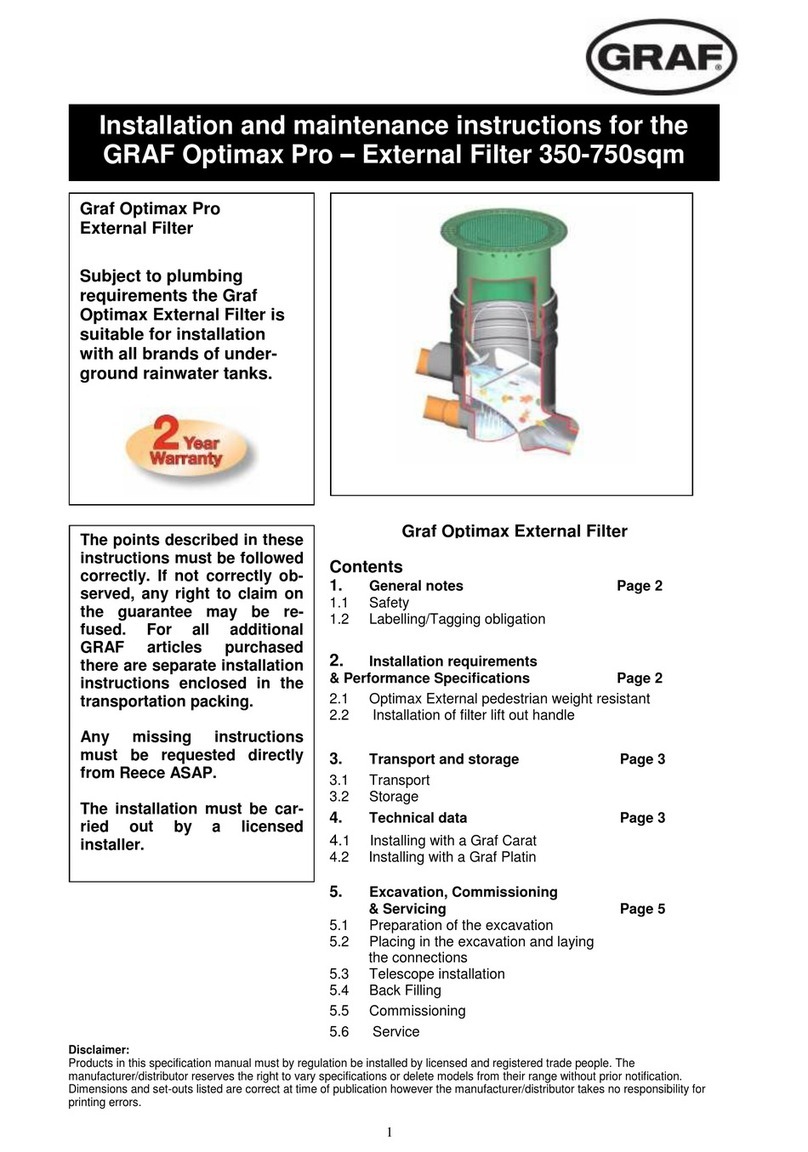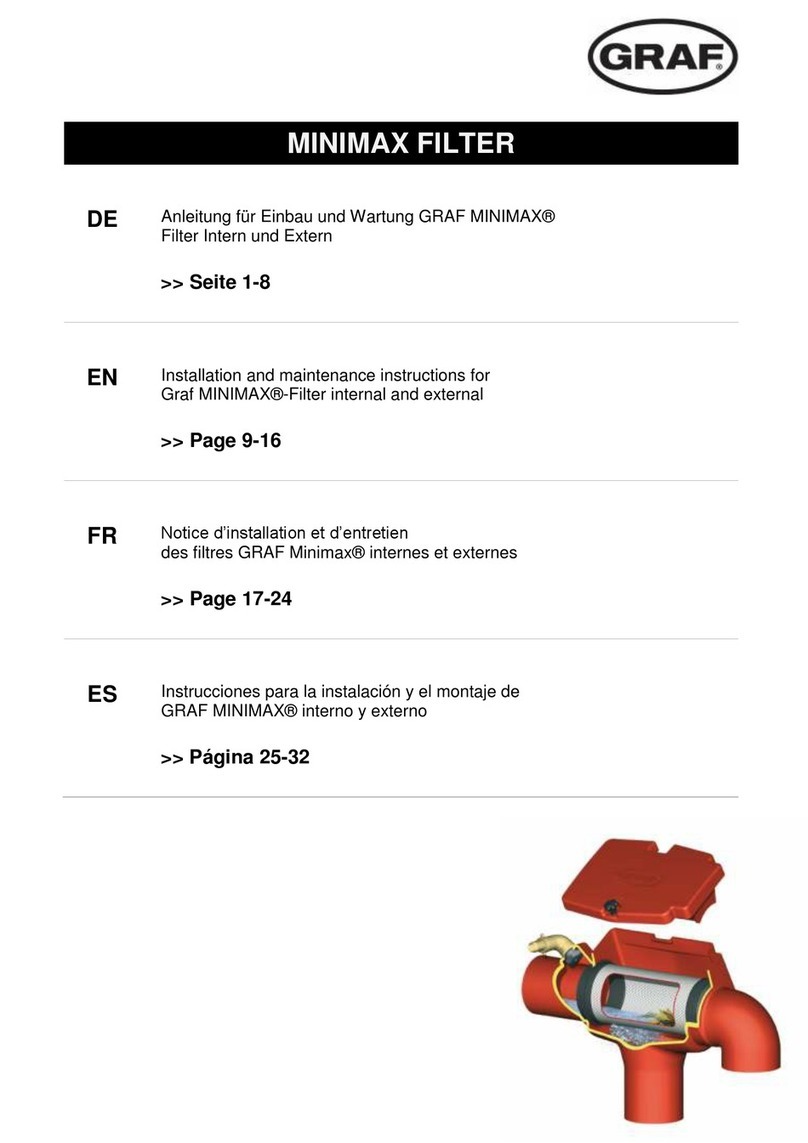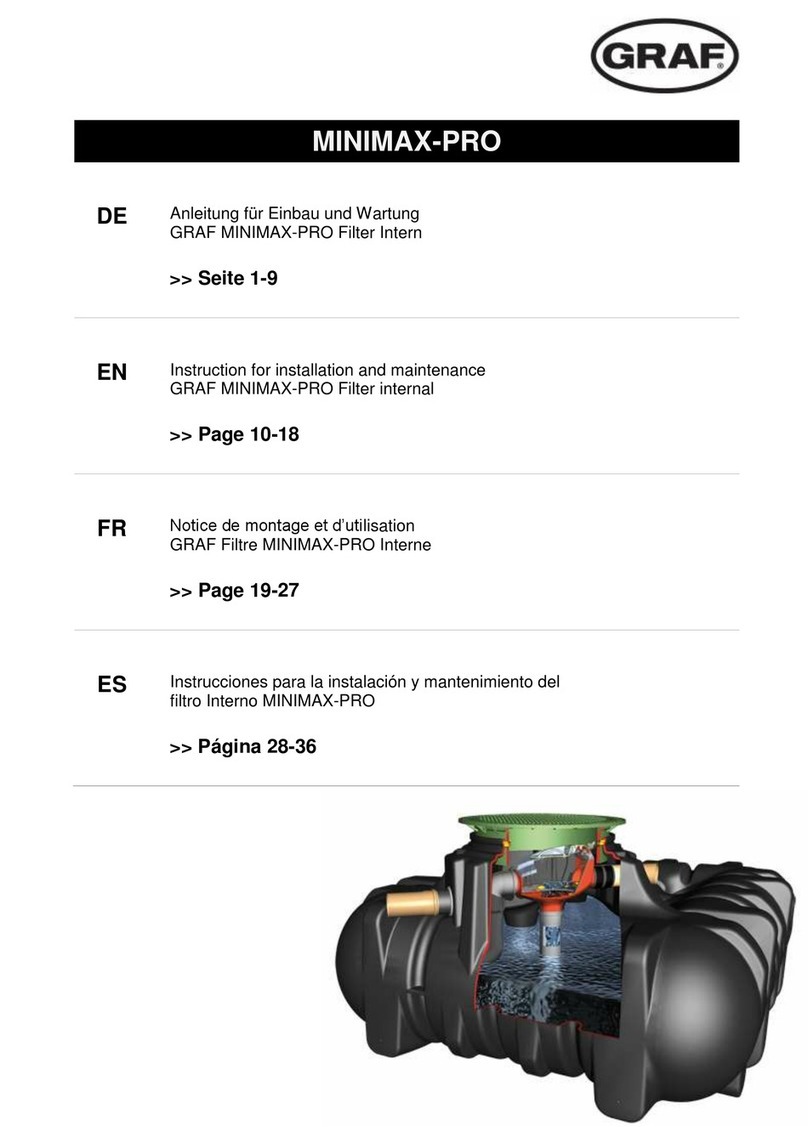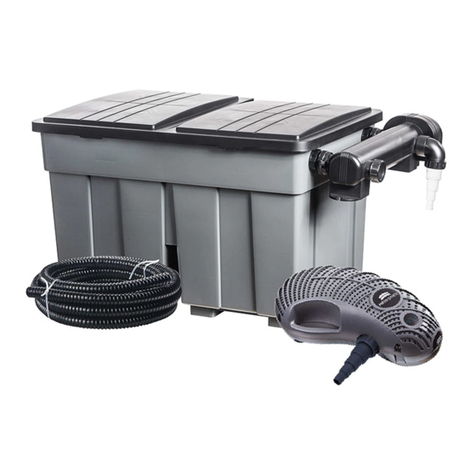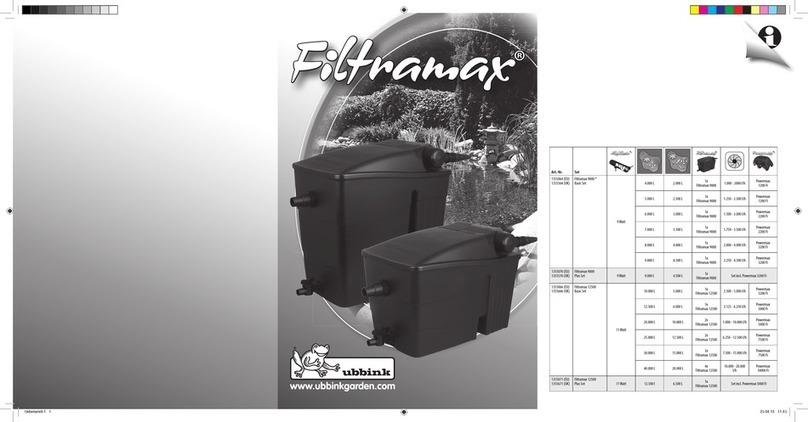
www.graf.info
6 / 32
5. Einbau und Montage
5.2 MINIMAX®-Filter extern
5.2.1 Baugrube
Damit ausreichend Arbeitsraum vorhanden ist und der Filter gleichmäßig verdichtet werden kann, muss
die Grundfläche der Baugrube die Filtermaße auf jeder Seite um ca. 300 mm überragen.
Die Böschung ist nach DIN 4124 anzulegen. Der Baugrund muss waagerecht und eben sein.
Die Tiefe der Grube ist so zu bemessen, dass die max. Einbautiefe (955 mm ab Oberkante Filter) nicht
überschritten wird. Für die ganzjährige Nutzung der Anlage ist eine Installation der wasserführenden
Anlagenteile im frostfreien Bereich notwendig, genaue Angaben hierzu erhalten Sie bei der zuständigen
Behörde.
5.2.2 Anschlüsse legen
Sämtliche Zu- bzw. Überlaufleitungen sind mit einem
Gefälle von mind. 1 % zu verlegen (nachträgliche
Setzungen sind dabei zu berücksichtigen). Der
Anschluss erfolgt an den angeformten Stutzen am
Filtergehäuse. Um die Fließgeschwindigkeit des
Wassers zu reduzieren sollte das Zulaufrohr vor dem
Filter ca. 2 m waagerecht verlegt werden.
Die DIN 1986 ist unbedingt zu beachten, d.h.
Ø Zulauf < Ø Ablauf.
Wird nur einer der beiden Tankzulaufstutzen
angeschlossen, sollte der Filter ca. 1 % in die
Richtung der Leitung geneigt werden, damit im
Gegenüberliegenden Stutzen kein Wasser stehen
bleiben kann.
5.2.3 Einsetzen und Verfüllen
Der Filter ist stoßfrei in die vorbereitete Baugrube einzubringen. Vor dem Anfüllen mit Rundkornkies ist
die Lage des Filters zu prüfen, anschließend wird in Schichten von ca. 30 cm die Umhüllung angefüllt.
Die einzelnen Lagen müssen gut verdichtet werden (Handstampfer). Beim Verdichten ist eine
Beschädigung des Filters zu vermeiden. Es dürfen auf keinen Fall mechanische Verdichtungsmaschinen
eingesetzt werden. Die Umhüllung muss mind. 30 cm breit sein.
5.2.4 Teleskop montieren
Das Teleskop wird von oben in das Filtergehäuse
eingeschoben. Es ist unbedingt darauf zu achten,
dass die Zuleitung im endgültig eingebauten
Zustand nicht vom Teleskop ganz oder teilweise
verschlossen wird. Vor dem Einschieben wird die
Profildichtung in die Dichtnut des Gehäuses
eingesetzt. Das Teleskop, sowie die Dichtung
müssen mit der mitgelieferten Schmierseife (keine
Schmierstoffe auf Mineralölbasis verwenden)
großzügig eingerieben werden.
Achtung: Trocknet die Schmierseife an lässt sich das Teleskop nur noch sehr schwer bewegen und es
besteht die Gefahr, dass die Dichtung aus der Dichtnut rutscht. Vor dem Verfüllen muss die Dichtung auf
ihren korrekten Sitz überprüft werden. Das Teleskop muss ausreichend unterfüttert werden, so dass sich
Kräfte auf keinen Fall auf das Gehäuse übertragen können.
Der Filter ist auf keinen Fall befahrbar und darf nur im nicht befahrenen Grünbereich installiert werden.
